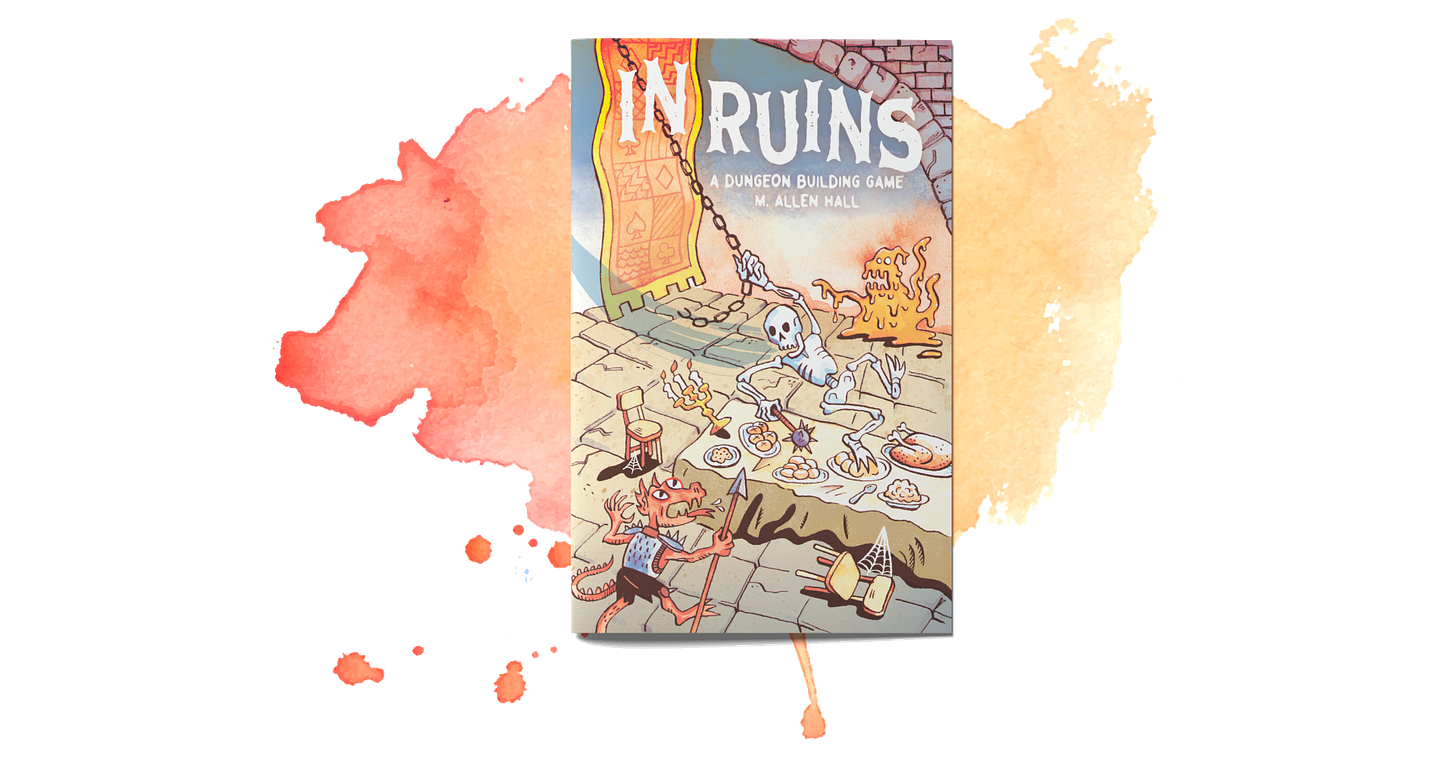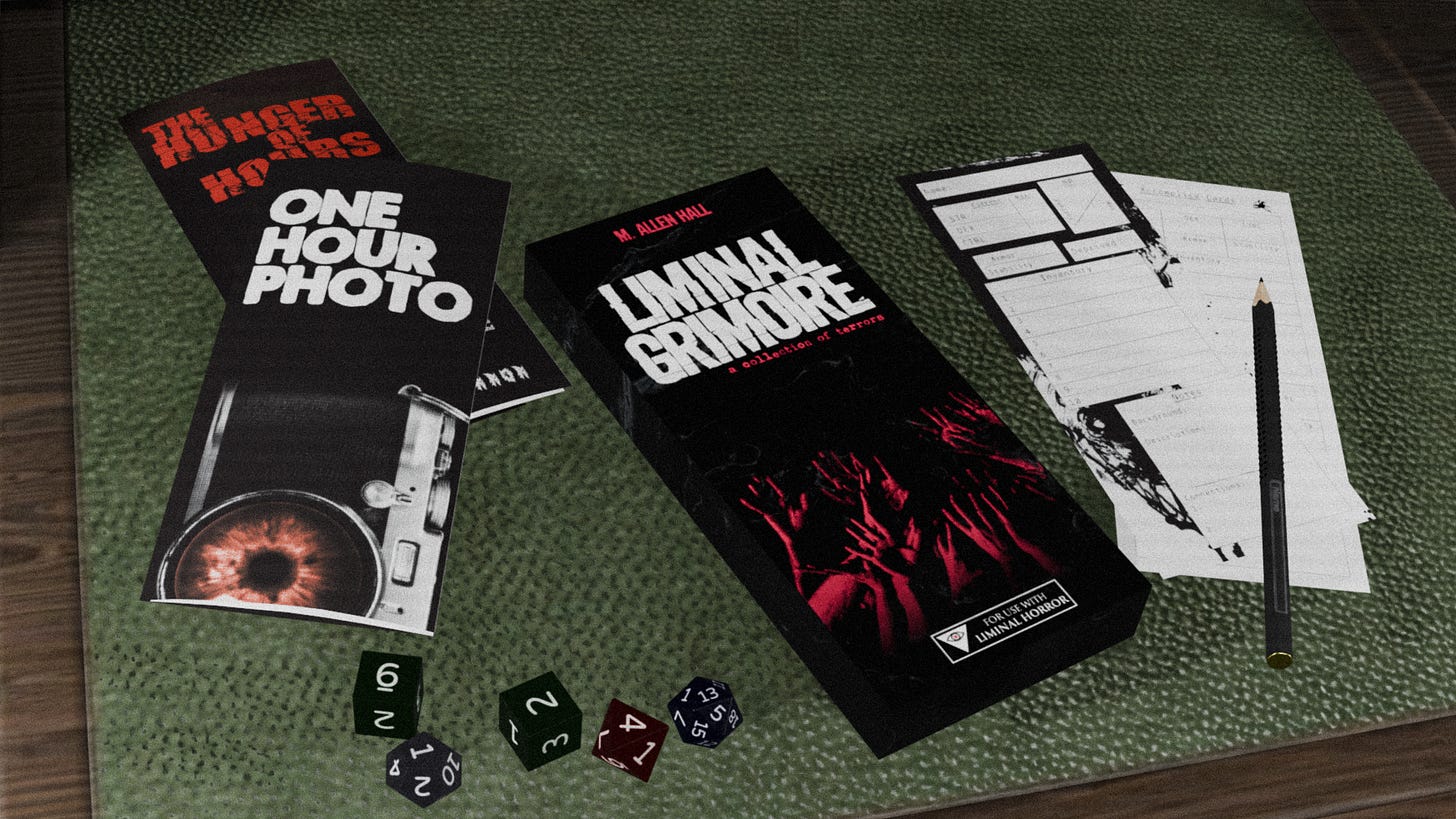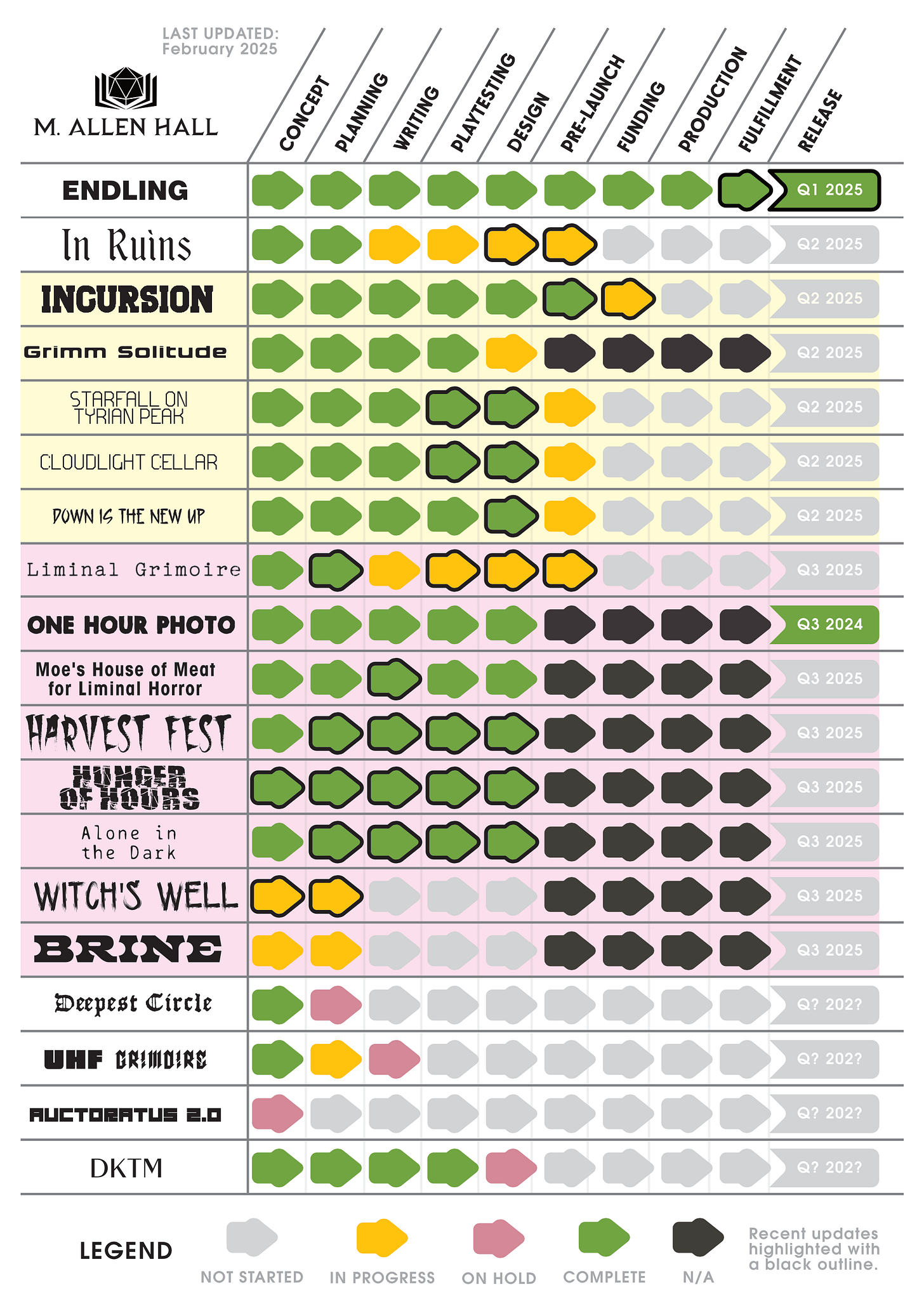“What kind of game is this?” the convention-goer asks, pointing at my display copy of Godspark.
“Well…it’s sort of a tabletop roleplaying game, but it’s also sort of a board game, but without a board, because if you wanted to just skip all the flavor text, you could still play it as a resource-management game with a d6 dice-pool and usage dice mechanisms. But it’s got great opportunities for fun roleplaying too.”
Blank stare.
“Well, it’s a game where you are a reborn saint in a purgatorial wasteland called Ruina Dei scavenging divine energy from the bodies of dead gods.”
“I’ll take it.”
This conversation has played out in more-or-less the same fashion ever since I announced the Godspark Kickstarter campaign just over a year ago. Its a question that I’ve gotten better about answering — or, at least, I’ve gotten better at giving the asker the answer that they are looking for. But I come back to it a lot. What kind of game is Godspark? For that matter, what kind of games do I make?
In this Ink & Dice, I’m going to talk about how I think about my games and how thinking about game types affects my creative process. I’ve also got some new projects to announce and the February production update!
Inside
In Ruins coming to Kickstarter (sooner)
Liminal Grimoire coming to BackerKit (later)
What kind of game is this?
February Production Update
In Ruins coming to Kickstarter
I talked about the game loop for In Ruins a bit in January. This game is the source of my main topic for this issue of Ink & Dice. As I build the Kickstarter page, I have been thinking about what kind of game this is. For a quick review, in the game:
Players collaboratively create the backstory of a castle.
Players take turns building and then ruining the castle, adding rooms to a map and telling stories about the important aspects of those rooms and how they changed over time.
Players finally take control of opposing factions and spread through the castle, claiming rooms for their factions’ territories and earning points based on the state of the rooms claimed.
The faction that claims the most points’ worth of rooms takes control of the Throne Room; that faction’s player wins the game.
The resulting map can be cleaned up and used as a location to explore using the fantasy TTRPG of your choice.
Anyway, I don’t really know how to completely describe In Ruins with a single label (see below). Regardless of the type of game, however, it has been fun at the table during play testing, and I hope it sounds like fun to you. If it does, you can follow the Kickstarter page for updates on the campaign here:
Liminal Grimoire coming to BackerKit
I talked about my plan for Liminal Grimoire last time in my post focused on pamphlet adventures. This product will be a collection of pamphlet adventures with a nice box to hold them all, along with solo tools and character sheets. I know it’s strange to “launch” two crowdfunding campaigns simultaneously, but this is a very different type of product from In Ruins. I am planning to launch this campaign on BackerKit to coincide with the Liminal Horror Deluxe Edition BackerKit campaign in mid-April.
If you are into modern horror TTRPGs and/or solo TTRPG play, give the campaign a follow for updates:
What kind of game is this?
In Ruins
Let’s think about In Ruins for a minute. What kind of game is this? It is certainly a tabletop game — it is played on a table, not on a computer or video game console.
Is it a roleplaying game? The players don’t have specific roles, though they do control factions. Does much roleplaying occur at the table? That will depend on the players.
Is it a board game? Well, there’s no board, but you create a map as you play. That could be considered a board…sort of. But the bring-your-own-components aspect, and the fact that the game is only a book, not a box, goes against the board game label.
Is it a worldbuilding game? I’m not even sure where this falls in the hierarchy of tabletop games, but there are certainly elements of In Ruins that would qualify as worldbuilding.
Is it a storygame? I am pretty new to the scene, but apparently this label has certain Connotations™, though in general, given that this is a game in which players create a story, I am inclined to say it applies. However, the very tactical network-building phase of the game, which results in a clear winner, seems to go against the usual expectations of a storygame.
Godspark
Let’s go back to Godspark now. That one is a little easier, as I’ve been thinking about it for a lot longer.
Is it a roleplaying game? YES. The player takes on the role of a reborn saint in Ruina Dei, a graveyard of the gods.
Is it a board game? YES. The play sheet — called the Saint Sheet — is a board, and your character — represented by a token on the hex map of Ruina Dei — moves around the board during play.
It is up to the player which way they want their game to lean. Some will lean into the roleplaying, telling the story of their saint’s fight to survive. Others will lean into the board game, skipping over flavor text and focusing on resource management. But it’s all there for them to choose from.
Why do I care?
Why is it important to apply these labels to games? Well, the selfish answer is that I want people to have fun playing my games. And setting appropriate expectations is a critical step to setting up players to have fun.
If I tell you that Godspark is a TTRPG, and you are expecting to be the GM for three friends that will make Godspark character sheets with ability scores and skill modifiers, you are going to be disappointed.
If I tell you that In Ruins is a network-building, area-control board game, and the first part of the games asks you to use your imagination to create the backstory for a castle that you will need to draw yourself, you are going to be disappointed.
If I tell you that Endling is a resource management game, and then you are asked to interpret tarot cards, you are going to be disappointed.
Can you have fun with any of these games? Of course. But if your first reaction after opening one of my books is disappointment, there’ll be a lot of work to be done before you’ll be back in the mood to have fun.
Where am I going with this?
I honestly don’t really know anymore. These things have just been on my mind as I work on In Ruins. For now, I will continue to call Godspark a Tabletop Adventure Game, and In Ruins is officially a Dungeon Building Roleplaying Game.
Think about games you’ve played at the border of these different game types. Almost all board games have settings, themes, and flavor text attached to different actions. What makes a game just a roleplaying game or just a board game? I don’t know, but it seems I like making games that sit on this line. I guess I’ll just have to keep coming up with my own labels to try to best convey what each game is about.
I’d love to hear your thoughts on the board game/roleplaying game divide. Share them in the comments:
February Production Update
Since last month, I’ve made good progress on In Ruins, and layout work is starting soon. Liminal Grimoire is coming along well, with 5 pamphlets completely done. I am aiming for 6-8 in the complete set. Oh yeah, and Endling has finished fulfillment!
As for my outside work, Incursion on Synteck Station is part of the Dirtbags! Kickstarter that is live now. Check it out for a fun d6 dice pool game of running and gunning sci fi action.
Thank you!
I will admit that I was rambling a bit there. Thanks for sticking with me to the end! I’m not sure what I’ll be talking about next time, but I’ll be back in a couple of weeks with another Ink & Dice.
— MAH






Really enjoyed the thoughts on blending different types of games. I continue to think that the space between TTRPGs and board games is a fertile area for development and innovation. The downside is that it makes it hard to "pitch" the game to someone. For example, at a convention there needs to be a way to communicate the promises of the game in seconds and in a loud environment. Not easy.
(Also, that production schedule chart is out of control. You are a machine.)